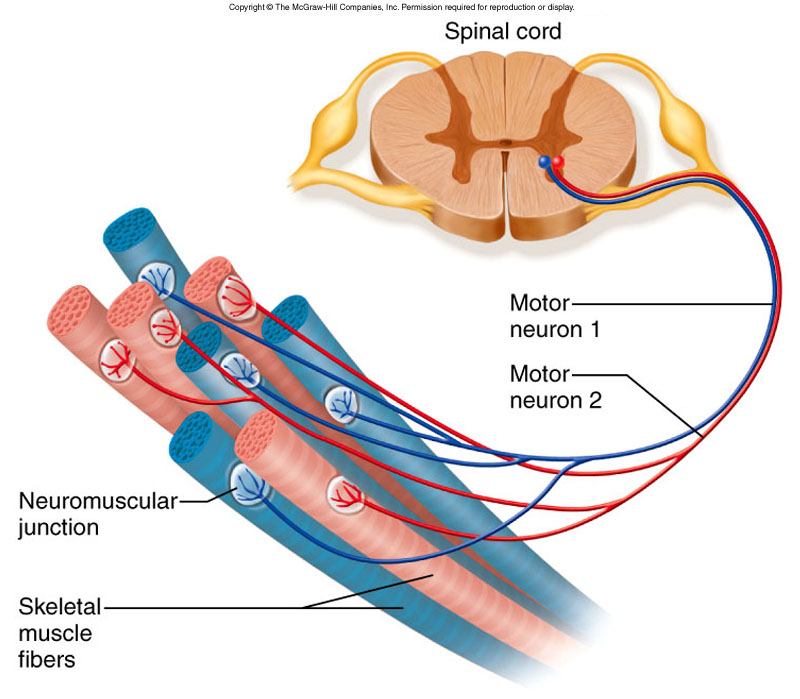Neural Tuning for Improving Strength: Pre/Post Activation Sequencing
In what could be one of the most technical titles I’ve ever put up on this blog, the essence of it is there’s a couple of ways to take advantage of nervous system responses to different types of loading to produce specific results, be they increasing the weight you can push on a bar or increasing how fast you can run or jump. They’re pretty simple to use and tend to produce some noticeable increases in performance and in a very short time frame, but first a quick overview of how the nervous system works.
Let’s say you’re watching the Grammys last night instead of Better Call Saul (Why oh why would you DO that to yourself??) and you noticed the moment when Kanye got up on stage during Beck’s award acceptance, looking like he was going to grab the mic, and then fades off with a smile and a wave, essentially trolling the entire world, including Taylor Swift.
This probably produced a bit of a rise in your heart rate, blood pressure, and a little bit of pupil dilation in response to the fight or flight autonomic nervous system. You expected something to happen after seeing something unexpected, which lead to a response in your system and you paying more attention. It happens. Likewise, if you watched the first 20 minutes of Better Call Saul where pretty much nothing of interest happened, your parasympathetic system was cruising along keeping you relaxed and barely interested, at least until the ending. I won’t spoil it here, but it was worth the ride.
Now some people will take advantage of the sympathetic and parasympathetic system in different ways. There’s a tendency for people who need to get supremely jacked up for events to get slapped to increase sympathetic drive.
A much less violent way to increase sympathetic activity is the use of smelling salts, or ammonia carbonate, which increases drive to respiration and increases heart rate and blood pressure through mucosal irritation. You could also go the adrenalin through the heart mode a la Pulp Fiction, but you only get one shot at that.
Getting jacked up for max lifts or competition is important, but so is prepping the body to match the minds intensity. In many ways you can do this with a few simple drills, depending on what you’re looking to do.
All muscles contract due to signals sent from the nervous system. There’s ways to take advantage of built in reflex loops that can cause muscle contraction without conscious thought, much like how you would pull your hand back from a hot stove before even realizing it’s hot, and how individuals with spinal chord injuries and who are essentially paralyzed can still have muscle spasms in their legs as a protective measure.
THIS PAPER by Wilson et al looked at electric stimulation of motor units in stroke patients, comparing their affected side to their non-affected side and to healthy controls. They found the stimulation to the affected side still produced a motor unit activation, but in a slightly delayed manner on compared to both the healthy controls and the non-affected side, and wasn’t reproduced with simple skin brushing.
In terms of how a motor unit creates an action potential, or a muscle contraction, THIS PAPER by Rodriguez-Carano et al does a great job of outlining how it happens and also the sequenced actions of contraction as summed up best in this graph.
The initial part is the muscle seeing a change in polarity due to the incoming neural impulse, and depends mostly on the position of the probe in relation to where the motor endplate is located. The first spike is when the end plate of the motor unit sees the first depolarization, or in other words the first muscle contraction. There’s usually multiple spikes, which help to extend the duration of the contraction without being a constant signal.
The terminal part is a repolarization of the muscle, preparing for the next contraction. Depending on the individual this phase could be very quick (solid recovery and high work capacity) or very long (detrained and not good at recovering from exertion).
When looking to create a neural response to training, you could work on some of the spinal reflex loops that produce these involuntary contractions, which usually occur with a higher amplitude and faster rate of contraction that conscious thought normally produces. One such example is the Hoffmann reflex. This is the classic test a doctor would use to determine if there’s any spinal reflex defects by flicking your middle or ring finger and seeing a contraction of the thumb flexor muscle in response to the stimuli.
When looking at neural conduction during something like a jump or a run stride, you can see this as a secondary contraction following impact that isn’t necessarily driven through conscious thought, known as the H-wave.
This is a pertinent reason as to why people trying to do a max height jump with do some form of pre-stimulation, like a step up, primary jump, or countercurrent arm movement to load up the stretch response and take advantage of that H-wave contraction, which can add in to the conscious force production and result in a higher jump. THIS PAPER showed an increase of 8.6cm in vertical jump height with the use of an arm swing compared to not swinging.
In terms of using this information to your advantage in the gym, you can go about it two different ways depending on your goal set. If you’re looking for smashing heavier weights in something like a deadlift or a squat, using a fast, plyometric type jump activity immediately prior may be beneficial. If you’re looking to sprint or produce maximal velocity contractions, using some relatively heavy loading with a focus on the hardest contractions against the load could be beneficial.
Dr. Fred Hatfield, an incredibly decorated powerlifter, former marine and PhD in sports sciences, would employ a max height vertical jump immediately before grabbing the bar and pulling a deadlift that would make most men weep with envy. The main physiological reason for this was to create that excitatory neural response through the muscle, develop a stretch-shortening cycle that would produce a new H-wave of contraction to assist the conscious contraction mechanisms, and essentially help him pull more weight, much like the countercurrent arm swing would help the vertical jump itself.
The guy could also squat over 1000 pounds at his prime, so he knows a thing or two of how to get the body moving for strength.
This pre-activation can have a massive effect on how you lift weights because it stimulates the nervous system to deliver more of a contractile impulse, a faster rate of neural delivery, and an excitatory impulse that can’t simply be acheived with conscious contraction alone.
You could similarly get a benefit for loading at or near max lifts by doing some hard stomps:
Another favourite of mine is a reactive twitch bird dog:
The goal is unloaded max velocity contractions, trying to increase how much neural activity is going through the muscles to get a carry over effect to the heavy movements.
Similarly, you could do a similar thing for speed contractions by producing heavy hard contractions prior to speed work. Joe DeFranco uses this with some heavy sled pushes prior to sprint work.
This
This increased drive and contraction force lead into faster actions when unloaded during the sprint work, and resulted in better times. If a simple thing like pushing a sled for a few yards before a sprint leads to a better time in the combine and gets a football player a contract, it’s worth it.
You could also use a loaded jump immediately before an unloaded jump to produce height, like this:
Box depth jumps produce similar pre-stimulation by loading the neural system with a larger eccentric load to produce a bigger stretch-shortening impulse. The downside to this is the depth drop height should be relatively small so as not to overload the system and produce a slower contraction or crumpling effect. Essentially, a 6-18 inch drop is all that’s needed to produce some height.
Chad Waterbury has even written about doing max isometrics prior to speed training.
When doing any of these neural primers, a big key to remember is you want to work on activation, not fatigue. Working to the end of abilities is great if you’re looking for just a cardio workout or hating life, but it doesn’t necessarily carry over to performance benefits. In many cases, the total volume of work you would do with these pre-activations is 1-5 reps. Any more than that and the neural impulse begins to fatigue and isn’t as strong, which means your ability to produce heat on the bar is reduced as well.
So here’s a sample workout you could try if you’re looking to smash your deadlift.
- Build up sets of weight to roughly 70% of your max.
- Perform one set of 3 reps per side of hard stomps or one single max height jump with countercurrent arm swing, then work on pulling the 70% weight with max velocity for a total of 5 reps and compare to the previous set in terms of relative effort and overall speed. If that bar is flying off the floor, go up in weight and see what you could do. Alternatively, you could do 10 kettlebell swings with max force and speed of hip hinge.
- Use the vertical jump prior to your pull with a weight you would perceive as your max. Compare your effort and bar speed to times when you lifted without a vertical jump.
For sprint work, try this:
- Complete a 10 or 20 yard sprint that’s preferably timed. rest for 1-2 minutes
- Load a sled or prowler with a challenging weight and push it for 10-20 yards as fast as possible. rest for 20-30 seconds.
- Complete another 10 or 20 yard sprint and compare times to the first set. Odds are you will be a little faster.
These neural drive exercises can be a highly valuable addition to any training program that’s focusing on performance outcomes like lifting more weight, lifting it faster, throwing stuff, or running or jumping faster. I wouldn’t recommend these for someone in the general population who is just looking to stay fit and have fun, as the outcomes aren’t consistent with their goal set. If they’re looking to smash heavy weights, then sure it can work for them, as long as there’s no spinal pathologies, or tendinous injuries to be aware of.
This is a concept I’ll be covering in Advanced Core Training when I present in New York February 28 and March 1st. Space is still available, so if you’re able to make it out we can have some fun, smash some muscles, and get crazy with it. I’ll also be presenting Ruthless Mobility, making this an epic 2 day workshop that will go down as a “must attend” for any strength coach or therapist looking to work on expanding the continuum of health and performance they’re currently working with. Continuing education credits are available through the NSCA as well, plus you’ll likely PR your everything, so that’s a definite benefit too.





2 Responses to Neural Tuning for Improving Strength: Pre/Post Activation Sequencing